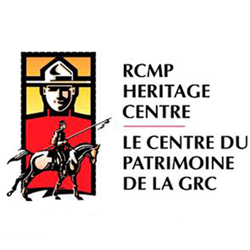Larry Burden’s This Day In The RCMP
The achievements and contributions of the Force have been built upon the individual contributions of many past Veterans. These contributions have largely been forgotten.
Veteran #35982 Sgt. Larry Burden who served in “E” Division for 20 years has spent over ten years researching and summarizing these achievements by specific date. Nearly every day, Larry sends out an email message with a selection from his work in progress manuscript “This Day In The RCMP” to individuals interested in these historical notes.
In an effort to share his research to a large group, Larry has agreed to permit us to develop a webpage on our website. Each webpage will post Larry’s historical notations over the past week.
If you wish to contact Larry Burden or provide additional information about his research, please email him at larryburden8@gmail.com.
The following are Larry’s latest “This Day In The RCMP” listings.
August 24
1874 – Commissioner French and 5 divisions of the NWMP arrived on the border of “Blackfoot” country, having trekked across much of western Canada.
1982 – #24515 Corporal Bruce N. McIntosh earned a Commissioner’s Commendation for Bravery after he and his partner #37314 Constable Gary Allan Wallace responded to a complaint in Nelson House, Manitoba. Neighbors had called the police because an unstable man, D.A. Kobliski, had a gun and had assaulted his mother and threatened to commit suicide.
After driving 60 miles north of the city Thompson they arrived at the scene and found Kobliski leaning out of the window of his house with a rifle. Cpl. McIntosh cautiously approached the house on foot and proceeded to talk to the gunman while Cst. Wallace stayed at their police car and provided cover for the corporal. After half an hour of talking Kobliski still refused to turn over the rifle but invited the two officers inside to talk over a cup of coffee. The gunman’s brother and sister who had been in the house agreed to go outside to speak with Cst. Wallace while Cpl. McIntosh continued to try and convince Kobliski to give up the gun. Suddenly he placed the rifle under his chin and threatened to shoot himself but then recanted and then pointed the rifle at the corporal and said he was going to shoot him instead. When Kobliski looked away for a split second, McIntosh grabbed the rifle and proceeded to wrest it from him. In the scuffle the rifle discharged and Cpl. McIntosh was shot through his lower right abdomen. By the time Cst. Wallace rushed in to help, the wounded policeman had already overpowered the gunman and was placing him in handcuffs.
Sergeant Bruce N. McIntosh recovered from his gunshot wound and returned to duty. He retired in 1998 after 32 years of service in the RCMP.
1985 – At the start of his shift in Gillam Manitoba, #33241 Constable R.D. Lyon had no idea that he would have to climb a 150’ hydro tower to help rescue a suicidal man.
When Hydro officials found a man was perched at the top of a tower threatening to jump, they attempted to talk him down. The jumper refused and requested to speak with Cst. Lyon, so he was dispatched to the scene. There Lyon and Manitoba Hydro employee Dorn Crowe, climbed the 150 foot tower and the constable eventually talked the man into putting on a rescue belt so he could get him to the ground safely. During the decent the suicidal man slipped on the ladder and Mr. Crowe caught the rigging rope with his hand receiving a severe laceration but preventing them all from falling. In recognition of their rescue of the suicidal man under hazardous conditions despite the great personal risk to themselves Mr. Crowe and Constable Lyon received the Commanding Officers Commendation.
1986 – While stationed at Gilliam Manitoba #36039 / O.?? C.H. Farquhar responded to a complaint of a dangerous man on the Shamattawa Indian Reserve. He was able to disarm and arrest the suspect without incident. He was later awarded with the Commissioners Commendation.
August 25

1917 – After two sensational trials a Calgary court convicted two Inuit men of the murder of a Catholic Priest. The trials were as much about asserting Canadian law over the Inuit and introducing Canadian sovereignty into the North as it was about prosecuting alleged murderers.
Inuit guides Sinnisiak and Uluksuk were hired by two Oblate missionaries, Father Le Roux and Father Rouviere in November 1913, to guide them on their journey from Great Bear Lake to Coppermine (now called Kugluktuk) in the Northwest Territories.
The priests reportedly treated the guides poorly during the trek along the fringe of the Arctic Ocean while enduring sub-zero temperatures and blizzards and tension started to build. On or about November 13th, 1913, one of the priests struck Sinnisiak in the face while they were camped at Bloody Falls. This enraged the two Inuit who then stabbed Father Le Roux to death and chased after Rouviere, and shot him in the back and then bludgeoned him with an axe when he attempted to flee.
After they murdered the two priests they ate part of Father Le Roux’s liver and then stole some of their belongings.
Catholic authorities became concerned when the priests were not heard from and eventually reports began to reach Fort Norman that two Inuit men had been seen wearing priests’ cassocks.

#4766 / O.180 Inspector Charles Deering (“Denny”) LaNauze, along with Constables #4794 Dennis Withers, #6296 James Edward Freeman Wight and an Inuit interpreter Ilavinik. set out from their detachment at Fort Norman on the MacKenzie River in July of 1915 to investigate the matter. During the fourteen-month patrol the group interviewed a Coppermine Inuit elder named Koeha, who described the events of the murder.
In the spring of 1916 LaNauze’s group joined up with #4600 / O.204 Corporal Wyndham Valentine McMaster Brice Bruce who had been patrolling the coast on a ship from Herschel Island. The group eventually located the two suspects at Coronation Gulf where they were arrested with out any resistance. When interviewed Sinnisiak voluntarily gave a statement detailing the events of the murders.
The initial trial in August of 1917 at Edmonton Alberta was the first time an Inuit had been tried in a Canadian court. Crown only pressed charges against Sinnisiak, and only for the murder of Father Rouvière. The reason was that Crown Counsel McCaul was concerned about the public sentiment being churned up by the media and he feared that six-man jury was anti Catholic. After the four day trial the jury delivered a verdict of Not Guilty. The confused accused Sinnisiak, blurted out, “It is not true. I did kill him.” Chief Justice Harvey and Crown Counsel McCaul were outraged but Crown Counsel was prepared with additional charges against both men for the murder of Father LaRoux. He then applied before the same judge for a change of venue, claiming that there was prejudice in Edmonton against the prosecution and the judge agreed and moved the venue to Calgary.
On August 25, 1917, a second trial for the murder of Father LaRoux was held and both men were convicted and sentenced to death by hanging. But the sentence was immediately commuted to life imprisonment to be served at the Mounted Police detachment in Fort Resolution. After only two years of doing odd jobs around the detachment both men were released from custody and returned to their homes.
Many have asserted that the special treatment of these men occurred so the Canadian government could send a message to the Inuit people to illustrate the power, supremacy and mercy of the Canadian law. Though they had been described as model prisoners while in custody, Uluksuk, became troublesome again and established a reputation as an arrogant bully and a thief. He met his end in 1924 when another Inuk, killed him. Sinnisiak led a quieter life and died in 1930.
Denny LaNauze joined the RNWMP in 1908 and retired as an Assistant Commissioner in 1944 when he returned to his native England where he died in 1952. Dennis Withers served from 1908 to 1936 retiring to British Columbia as a Sergeant. James Wight also retired as a Sergeant having served from 1914 to 1945 and returned to Yarmouth NS. Wyndham Valentine McMaster Brice BRUCE served in the Force from 1907 to 1943 when he retired to North Saanich BC as an Assistant Commissioner.
1941 – The 7th reinforcement draft to the WWII RCMP Provost Corps included Constables:
#13333 Alexander McEwen
#13633 Kenneth Ferguson
August 26
1876 – The Cree, Saulteaux and Chipewyan nations of present-day central Alberta and Saskatchewan signed Treaty #6 at Fort Carlton in Saskatchewan establishing total 194,725 sq km set aside for reserves. In the terms of the treaty, the government of Canada agreed to provide schooling, and farm implements, seeds, farm animals and instruction in agricultural techniques. The government also agreed to provide famine relief and medicine when needed.
1939 – Honour Roll Number 62.

Photograph of Constable Willis Edward Rhodeniser (Reg.#12690) (Source of photo – RCMP Gravesite database).
#12690 Constable Willis Edward Rhodeniser age 28 was shot and killed near Carlyle, Saskatchewan, while tracking a multiple murder named Nelson Sammy.
Nelson Sammy had a volatile relationship with his wife Ruth and suspected her of seeing other men. On Friday August 25, 1939 after a violent argument at their tent on the Indian Reserve near Carlyle, Ruth Sammy took their two daughters and fled to the home of her niece Gladys McArthur.
Nelson Sammy had long harboured resentment against his wife’s parents because they had continually encouraged her to leave him. Suspecting that his wife had gone to her parent’s home, Sammy grabbed a high-powered rifle and went looking for her there. When he confronted his mother-in-law in her yard she refused to disclose her whereabouts, so Sammy shot and killed her. Then when he saw his father-in-law further down the road he raised his rifle and killed him without uttering a word.
When Sammy arrived at Ruth MacArthur’s home he saw his wife and daughters sitting at the kitchen table and without saying anything he shot her in the chest.
When Sammy’s friend John McArthur came out of the house to talk to him, Sammy asked how his wife was and McArthur told him that she was dying. Sammy then told his friend that he loved his wife but her parents were trying to take her away from him. Then pushing his bicycle down the road he warned him that he still had ammunition and that he intended to kill more people.
The following morning the RCMP organized a search party that included the dog handler Constable Willis Edward Rhodeniser and his German Shepard “Tell” who had come over from Yorkton Detachment. Later that evening, the search party got a lead on Sammy when a Native elder contacted the Indian Agent and stated that he had seen Sammy near his barn. After the posse went to the barn the dog immediately picked up Sammy’s scent and Constable Rhodeniser began tracking his trail westward towards a thickly wooded bluff.
As darkness set in, the dog running off of its leash closed in on its quarry. In his haste to protect his dog, Constable Rhodeniser made the serious mistake of turning on his flashlight. Suddenly a shot rang out and he was hit in the chest. Rhodeniser returned several shots from his revolver and soon the rest of the police officers were shooting as well. Nelson Sammy was badly wounded and taken into custody but Constable Rhodeniser died at the scene with his dog “Tell” lying at his side.
Nelson Sammy recovered from his wounds and was convicted for killing his wife and her parents and for the murder of Constable Rhodeniser. At 01: 15 A.M. on July 4, 1940 Nelson Sammy went to his death in the gallows at the Regina Jail.
Constable Willis Edward Rhodeniser, a native of Farmington Nova Scotia joined the RCMP on July 2, 1935 and became a dog handler in October 1938. His body was retuned to his parents where he was buried with full military honours at the cemetery in Bridgewater Nova Scotia.
1955 – Honour Roll Number 110.

Photograph of the grave marker for Constable Roy Eldon Laird (Reg.#14694) (Source of photo – RCMP Gravesite database).
#14694 Constable Roy Eldon Laird age 34 was killed in a police car accident near Medicine Hat Alberta after he failed to negotiate a sharp turn in the road.
The accident occurred when Laird was returning to his home in Manyberries, when he rolled the car around 9:30 pm on the Ranchville Road 36 miles south of Medicine Hat Alberta.
Though he wasn’t seriously injured in the crash, he died from asphyxiation because his left arm had been outside the window and became pinned under the vehicle. His head was positioned that his chin pressed against his chest with enough pressure to close off his windpipe and asphyxiate him.
His tragic death was further compounded by the fact that Constable Laird was a highly decorated combat veteran who had survived numerous combat engagements in Italy France, Holland and Germany while serving with the 1st Special Service Force or “Devil’s Brigade” during the Second World War.
Roy Eldon Laird joined the RCMP in 1946 and had served in several postings in Ontario and Alberta. He was buried with full military honours at the RCMP cemetery in Regina and was survived by his wife and five year old son.
1994 – The RCMP often utilize highly trained motorcycle officers for traffic control during large events such as VIP escorts and major public events. Operating a large police bike during these types of activities can be very dangerous and such was the case during the Commonwealth Games in Victoria British Columbia. As #35561 Constable Jules Horvath preceded down the Patricia Bay Highway, a vehicle pulled out in front of his motorcycle causing a head-on collision. Horvath was severely injured and the initial reports stated that he had been killed in the crash. Fortunately he survived his injuries and eventually returned to active duty after spending several months in hospital.
2000 – Norman Edward Reid was a man tormented by mental illness who in turn created fear among his relatives and neighbors in the tiny fishing community of Little Catalina near Bonivista Newfoundland.
Reid had a history of violence and aversion to taking medication to control his mental illness and he lived in conditions that were described as “squalor, filth and absolute wretched conditions”. He had no electricity, he had no decent food and he refused all offers of assistance that would have improved his lot in life. The community of Little Catalina lived in fear of him and nobody would file a police complaint against him for fear of retribution.
Norman Reid had an extensive history of being arrested under the mental health act and involuntary admissions to hospital, but every time he was released he immediately ceased taking his medication and rapidly deteriorated into a state of paranoia and erratic behavior. On this day Reid was witness by family and neighbors acting erratically waving his arms and swearing at no one, shouting and praying and acting in a hyper state.
When Norman Reid told a neighbor, Wade Eddy that he was going to slit his throat, drink his blood and do the same to Eddy’s children, Wade Eddy had enough and called the police.
Seconds later #43897 Constable John Daley was dispatched to the scene. Daley was no stranger to the Reid’s behavior and while en route called his partners #41423 Constable John Graham and #47074 Constable John Anorico Malinay for backup. 34 minutes later the three policemen arrived at Reid’s house and as they approached the fence on the south side of the property Norman Reid came out and began shouting at them to get off of his property. He then went back inside the house and returned with a small axe and continued to yell at the police.
When Reid produced the axe the three officers moved to strategic positions and drew their handguns and attempted to convince him to drop his weapon.
During the standoff Constable Graham attempted to convince Reid to put down the axe and advised him that he was under arrest for uttering threats. Reid continued to shout at the police and demanded to know who had called them and ordered them to get off of his property.
When the opportunity presented itself, Constable Graham pepper sprayed Reid in the face, but it had no effect on him and when he tried to use his expandable baton it failed to lock open. The standoff had gone on for approximately 12 minutes, all the while the police ordered him to drop the weapon, but instead Reid refused and made threatening chopping motions with the axe. Suddenly Reid yelled at Graham “”I’m going to kill you” and rushed at the constable waving the axe. Graham yelled “stop, stop stop” but Reid kept coming. Then Constable Graham fired a shot into Reid’s chest but he kept coming until Graham fired four more times killing him.
The subsequent investigations cleared the three officers of any wrongdoing. But the shooting of Norman Reid and another mentally ill man within the space of 51 days focused the public’s attention to the plight of mentally ill people who fall through the cracks of society. The Judicial Inquiry made 40 recommendations to improve the way the mentally ill are handled by all levels of government services in an effort to prevent tragedies such as this from occurring again.
August 27

Extract from the North West Mounted Police Personal File for Constable Charles Scott (Reg.#778). Document reflects him being written off the strength of the Force (Source of document – Library Archives of Canada).
1883 – Career wise, the only claim to fame that Constables #778 Charles Scott and #868 Albert Chadwick could make, is that they deserted on the same day as one of history’s greatest explosions. This was the day the Mount Krakatou east of Java erupted.
1900 – Faulty ammunition is has always been a concern to police officers as #3658 Constable James Cumines discovered when he was injured when a cartridge exploded while he was loading his carbine rifle while training at Depot Division in Regina, Saskatchewan. Issues regarding faulty ammunition were not just a concern 100 years ago. When the author was in basic training in 1980, a troop mate next to him on the firing line had the slug fired from his revolver drop to the floor ten feet in front of us in the indoor shooting range!
1913 -Honour Roll Number 40.

Photograph of Constable Michael James Fitzgerald (Reg.#3617) name appearing on the RCMP Cenotaph at “Depot” Division in Regina (Source of photo – Sheldon Boles).
# 3617 Constable Michael James Fitzgerald age 37 drowned in the White River, Yukon Territory while en route to a new posting near the Shushana Gold Fields.
It seems that fate had intended Constable Michael James Fitzgerald to meet his end by drowning. Twelve years before he escaped death when he and two other constables, Campbell and Heathcote ended up in the Stikine River in Alaska. In that incident Fitzgerald was the sole survivor and his two mates drowned. (See Honour Roll #24 December 26, 1901)
Constable Fitzgerald was traveling up the White River aboard the steamer “Vidette” to his new posting when he offered to help the crew maneuver a barge the ship was pushing around a bend in the river. As he and the rest of the crew began pulling on a dragline that was attached to the barge, the nose of the craft became caught on some submerged brush and the “swing handle” on the line broke free and smacked Fitzgerald on his head. The force of the impact threw him overboard and into the water. As the crew scrambled to launch a boat and row out to him, everyone aboard thought that he was ok, because he was swimming towards the boat. But then suddenly he threw his hands in the air and sank beneath the surface. The crew quickly recovered his body and took him ashore and attempted to revive him. The unconscious Constable Fitzgerald was bleeding from both of his ears and though they spent two hours attempting to revive him, he never regained consciousness. A later examination of his body determined that he had suffered a fracture at the base of the skull from the impact of the sweep handle.
Constable Michael James Fitzgerald was single and had no family other than his parents who lived in Nova Scotia. He joined the RNWMP on April 3, 1900 and was buried with full honours at the cemetery in Dawson City Yukon.
August 28

Image of an RCMP member which appeared in the July 1934 edition of the RCMP’s Quarterly magazine.
1903 -#3156 Constable Henry (Larry) Lett received a commendation and was promoted to Corporal after he arrested an American gunslinger; the “Idaho Kid” in Weyburn, Saskatchewan.
An American fellow by the name of Brandenberger who called himself the “Idaho Kid” came to Weyburn got drunk and began shooting at town signs and anyone who bothered to lean out of a window. From the veranda of the local hotel the “Kid” ordered a man who was walking down the street to hold up his hat, and then he riddled it with bullet holes. When the locals told him to keep quite or they would call the police, the “Kid” dared anyone to try and stop him and boasted that no Sheriff in Montana had ever tried to take him on and that he was the kind of man that would never be taken alive. When a citizen told him that he was going to call in the Mountie from Halbrite, the Kid boasted that he would eat his liver cold and then bet anyone in the crowd $25 that he was too hard and wild to be arrested by a Mountie. Three men in the crowd stepped forward and accepted his bet!
Constable Lett a decorated veteran of the Boer War who had spent eight years in the Dragoon Guards received the telegram from the local Justice of the Peace and wasting no time, flagged down a freight train and made his way to Weyburn. When he arrived he discovered that everyone was too scared of the gunslinger and all refused to back him up. After browbeating the JP into standing within hailing distance of the gunslingers hotel room, the 5’9”, 170lb constable walked up to the gunslingers door and knocked. When the Kid opened the door and saw the policeman he went for his pistol, but Lett jumped him and yanked the gun from his grasp. He then promptly handcuffed him and placed him under arrest. Having no jail to lock him up in, the good constable bound him up in his own hotel room and caught the train back to Halbrite the next day.
Sergeant Major Larry Lett took his discharge from the North West Mounted Police in 1918 and served with the newly created Saskatchewan Provincial Police for eight years. When that Police Force was disbanded he was appointed the Sergeant of Arms in the Saskatchewan Legislative Assembly in 1927 and served until his death in 1934.
1941 – At the sound of the tone… The official national time is established at the Dominion Observatory in Ottawa at 1 pm on this day.
1961 – After failing to appear in court on a charge of theft after being released on bail, David Fleming went on a rampage in the small community of Portugal Cove, Newfoundland. Over several days several local residents called the police to report that a man was running wild in area with a gun but all attempts to catch him failed. Late in the evening of August 28, Constables #17932 Charles Herman Spofford, #18502 / O.886 Murray Robert Evans and #21476 James Hilton Hartling dressed in civilian clothing, left the Detachment in St. Johns hoping to capture Fleming who had been reported sleeping at a home at Beachy Cove.
Constable Hartling was instructed to stay outside the home and rush to the sound of breaking glass in case their suspect attempted to flee the scene through a broken window like he had done previously. Constables Spofford and Evans then knocked on the door of the house and identified themselves to the owner who agreed to let them search the house for Fleming. As the policemen were about to search another bedroom, the home owner suddenly stepped in front of them and flung open the bedroom door and then stepped aside. Fleming appeared pointing a gun at the constables and ordered them to raise their hands and turn around or he would shoot them. Both men complied and Fleming attempted to search Constable Spofford for his service revolver. When he couldn’t locate it he told him to turn around slowly. In the process Spofford managed to distract Fleming by taking off his gloves and then pounced on the gunman, grabbing the pistol and pushing Fleming across the room and into the wall. Constable Evans then smashed a window to alert Hartling and then managed to wrestle the gun from Fleming’s hand and toss it to Constable Hartling. After his arrest David Fleming was returned to court and received two years in jail for skipping bail and being possession of an offensive (stolen) weapon.
For their courage Constables Spofford and Evans were awarded the Commissioners Commendation for Bravery.
August 29
1919 – Prince Edward Island removes ban on automobiles after several years of not allowing cars in the province.
1921 – While off duty in Regina #5317 / O.303 Sergeant Walter Henry Lougheed observed members of the Regina City Police and the Saskatchewan Provincial Police pursuing three bank robbers. When he attempted to assist the other policemen Lougheed was shot and wounded in the left knee by one of the robbers. The police were successful in capturing the trio. Charged with robbery and shooting with intent to kill were W. LaMarr, A. Woodman and J.J. Lollarine. Sergeant Lougheed received a Commissioner’s Commendation for his actions.

1964 – FLQ terrorists hold up a gun store in Montreal.
1974 – Detachment commanders often spend more time in administration than they do conducting frontline law enforcement. On this day #17711 Sergeant Warren Hoover displayed courage and discretion when he disarmed a potentially dangerous person at Nipawin, Saskatchewan. He was awarded the Commanding Officers Commendation.


 August 27, 2015
August 27, 2015 








